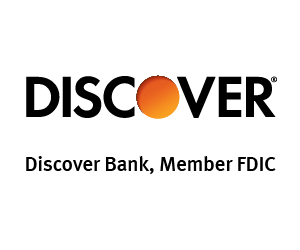Don't Miss Out: The One Type of Bank Account You Need to Open ASAP
KEY POINTS
- Everybody should have a high-yield savings account because of the high interest rates this type of account offers.
- The average savings account APY is 0.38%, but many high-yield accounts are currently paying 4.30% to 4.50%.
Most people don't open new bank accounts all that often. It's not a long process, but it does take some time to open a new account, fund it, and then switch over bills and direct deposits. When you already have a checking account and a savings account, you certainly don't need to make any changes -- but there is one change that could be well worth the time.
If you have a standard savings account with an average interest rate, you're giving up a lot of money. The average savings account APY is currently 0.38% as of July 2024, meaning a $10,000 balance would earn $36 in interest after one year. Many big banks don't even offer this much. Some, including Bank of America and Chase, have savings accounts with a 0.01% APY.
A much better option is a high-yield savings account. Many of the top high-yield savings accounts have APYs that are 10-times higher, or more, than the national average. If you haven't opened this type of bank account yet, it could be one of the most impactful financial changes you make. Here's how to do it.
Choose a high-yield savings account
There are lots of online banks offering high-yield savings accounts, so you won't be short on options. Here's what to look for in a quality savings account:
- High APY: Rates fluctuate, but the best accounts are offering between 4.30% and 5.30% right now.
- No monthly fees: If a bank charges a maintenance fee, keep looking. Plenty of accounts are fee-free, so there's no reason to pay for a savings account.
- FDIC insured: When a bank has FDIC insurance, depositors are covered for up to $250,000 per eligible account in the event of a bank failure.
- Reasonable or no minimum deposit: Make sure you can meet any minimum deposit requirements an account has. If you don't want to deal with this, there are account options with no minimum deposit requirement.
Looking for some account suggestions? Here are three that meet all the above requirements:
- The Customers Bank High-Yield Savings Account (offered through Raisin) has one of the highest rates, with a 4.01% annual percentage yield (APY). It also doesn't charge any fees. If you want to earn as much interest as possible, this account is a great choice.
- The SoFi Checking and Savings account (member FDIC) earns up to 3.80% APY on savings balances and has a welcome offer of up to $300¹. To earn the maximum amount on savings, you need to set up a direct deposit to your checking or savings, or deposit at least $5,000 every 30 days. As a new customer, you can also earn a welcome offer for setting up direct deposits. A 25-day evaluation period starts the day you receive your first direct deposit. If you receive between $1,000 and $4,999 in direct deposits during that period, you earn a $50 cash bonus. If you receive $5,000 or more in direct deposits, you earn a $300 cash bonus.
>> Open a SoFi Checking and Savings account now. << - The Capital One 360 Performance Savings earns a 3.50% APY and has branch locations you can visit. Most high-yield savings accounts are available through banks that operate exclusively online. If you like being able to visit your bank in person, this Capital One account could be a good fit. Capital One has hundreds of banking branches across the country.
>> Open a Capital One 360 Performance Savings account now. <<
Open and fund your account
When you've picked an account, all you need to do is open it and add money to it. You'll need to provide personal information and contact information during the application process, including your:
- Name
- Date of birth
- Social Security number
- Physical address
- Email address
- Phone number
The entire process often takes less than 15 minutes. Once you've opened the account, you'll get your account number and the bank's routing number. You can use those to transfer money to it.
Many high-yield savings accounts don't offer a debit card. For that reason, it's better to keep money you may need soon in your checking account. But for savings that you don't need anytime soon, transfer it to your high-yield savings account to earn as much interest as possible on it.
Our Research Expert
We're firm believers in the Golden Rule, which is why editorial opinions are ours alone and have not been previously reviewed, approved, or endorsed by included advertisers. Motley Fool Money does not cover all offers on the market. Motley Fool Money is 100% owned and operated by The Motley Fool. Our knowledgeable team of personal finance editors and analysts are employed by The Motley Fool and held to the same set of publishing standards and editorial integrity while maintaining professional separation from the analysts and editors on other Motley Fool brands. Terms may apply to offers listed on this page. APYs are subject to change at any time without notice.
SoFi disclosures
¹ New and existing Checking and Savings members who have not previously enrolled in Direct Deposit with SoFi are eligible to earn a cash bonus of either $50 (with at least $1,000 total Direct Deposits received during the Direct Deposit Bonus Period) OR $300 (with at least $5,000 total Direct Deposits received during the Direct Deposit Bonus Period). Cash bonus will be based on the total amount of Direct Deposit. Direct Deposit Promotion begins on 12/7/2023 and will be available through 1/31/26. See full bonus and annual percentage yield (APY) terms at sofi.com/banking#1.
² SoFi members who enroll in SoFi Plus with Direct Deposit or by paying the SoFi Plus Subscription Fee every 30 days or with $5,000 or more in Qualifying Deposits during the 30-Day Evaluation Period can earn 3.80% annual percentage yield (APY) on savings balances (including Vaults) and 0.50% APY on checking balances. There is no minimum Direct Deposit amount required to qualify for the stated interest rate. Members without either SoFi Plus or Qualifying Deposits, during the 30-Day Evaluation Period will earn 1.00% APY on savings balances (including Vaults) and 0.50% APY on checking balances. Only SoFi Plus members are eligible for other SoFi Plus benefits. Interest rates are variable and subject to change at any time. These rates are current as of 1/24/25. There is no minimum balance requirement. Additional information can be found at http://www.sofi.com/legal/banking-rate-sheet. See the SoFi Plus Terms and Conditions at https://www.sofi.com/terms-of-use/#plus.



